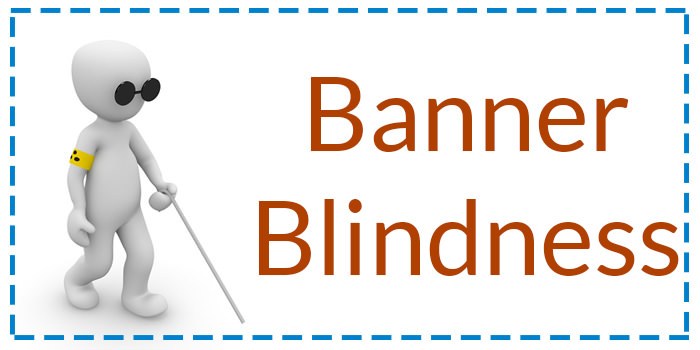
1. Not placing ad space strategically and becoming a victim of banner blindness.
Choosing the right space ad slot in a webpage is crucial. In 2019, the focus in on utilizing the non conventional spaces to place ads. A custom website design here helps. A publisher has to analyze the data, run heat maps and then decide which section of the website receives clicks and the revenue potential of that space. While doing so, the publisher needs to maintain a balance of not overpowering the content with ads as doing so might lead to decline in Google page rank.

It is seen that publishers place ads in generic locations. These positions are also utilized by other websites and publishers. Since the user is smart and know his way around websites, placing ads at generic locations will lead to a phenomenon known as banner blindness. This is a situation when your visitors simply ignore the ads and hit the back button when their need is fulfilled. To avoid this, ad spaces should be upgraded every 6 months and a balance between content and ads should be maintained. Publisher should also use an ad server data to see how their visitors interact with their ad spaces.
2. Relying heavily on ad networks & CPC platforms
Although ad networks are the easiest way of monetizing a website, they can also chip away major ad dollars away from publisher’s pocket. They also offer very less control over the ads that serve and adding floor prices. Moreover, they do not work on bidding and hence the major revenue potential is wiped of.

To counter this, publishers with decent traffic (1Million page views per month) can go for Ad Exchanges or Supply Side Platforms. These platforms work on Real time bidding where every impression is auctioned and the best price is fetched. This gives you extra revenue while consuming less impression. The left over impressions can be later filled by ad network to get extra revenue. Please note, to achieve this, you’ll need an ad server like Google Ad Manager.
Some examples of Ad Exchanges are Google’s Ad Exchange, Index, OpenX, AOL, Rubicon, Appnexus and others.
3. Not taking expert advice/hiring a consultant
Publishers usually refrain from taking advice of an AdOps expert. This is usually coupled with the high fees and lack of knowledge. Many medium sized publishers and developers even do not know that AdOps exists as a profession. That being said, onboarding an AdOps expert as a consultant can help you boost your revenue.

These people optimize and increase revenue for a living. Then can help you starting from the finding the right spot for placing an ad to choosing the right network/exchange. However, these people charge too much and if your website is getting decent traffic, you are recommended to hire one. The insights provided by an adops professional are valuable and if plugged in with the right technology can even 3x your revenue.
4. Choosing the wrong ad server
Ad server is a piece of technology that helps a publisher manage the entire advertising on their website or app. An ideal ad server helps a publisher with the following:
- – Run direct brand campaign.
- – Run networks, exchanges and SSP.
- – Prioritize between campaigns & sources.
- – Host different types of creatives.
- – Provide report on campaigns.
- – Forecast on the inventory.
- – Support
If your choice of ad server has these features, then you are in the right ship. If not, then the performance of you campaigns will not be guaranteed. Your campaigns will not deliver as expected. Many publishers Choose Google’s Ad Manager as their default ad server. It is robust, capable and has good support. If you are looking to create your own ad server with custom you can go for smart ad server.
5. Not creating an advertise page and running direct campaigns.
An advertise page is very crucial for a publisher looking to monetize their website traffic. An advertise page helps a potential advertise to see the type of audience your website gets, the pageviews and the how to reach out to you for advertising. You can mention the following details in the advertise page to attract attention:
- Locations and ad formats available for running campaigns.
- Important numbers like Page Views, Avg Time, Impressions/month and bounce rate.
- Audience classification based on Gender, Geography & Interest.
- Previous campaigns use cases & testimonials.
- Your Sales person’s Contact details.
Here are some examples of a good advertise page BBC.
Latest blogs

5 Mistakes web publishers make with their in house AdOps.
Adoperations can be tricky. A small mistake could mean the obliteration of your website & the advertising revenue with it. See the top mistakes publishers to while running their ops in house […]
Read More
